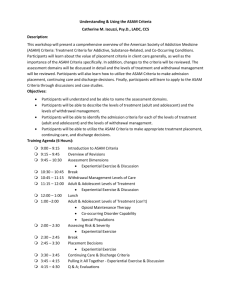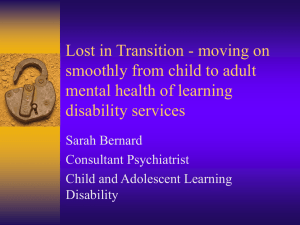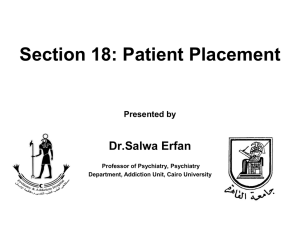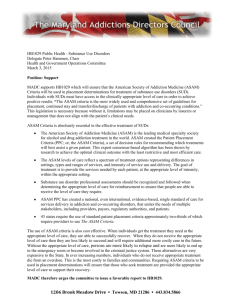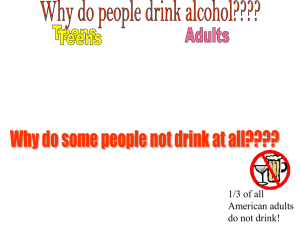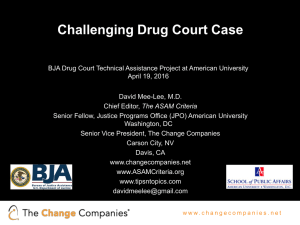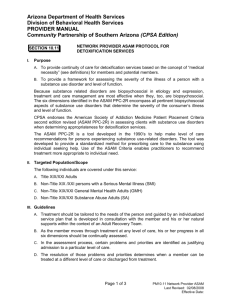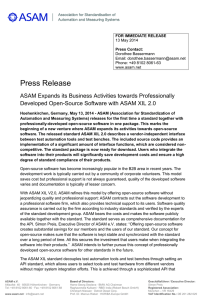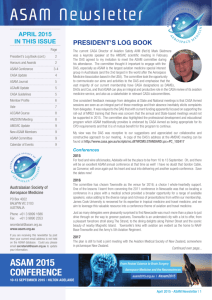10a ncac 27g .3813 PLACEMENT CRITERIA FOR ASSESSED DWI
advertisement
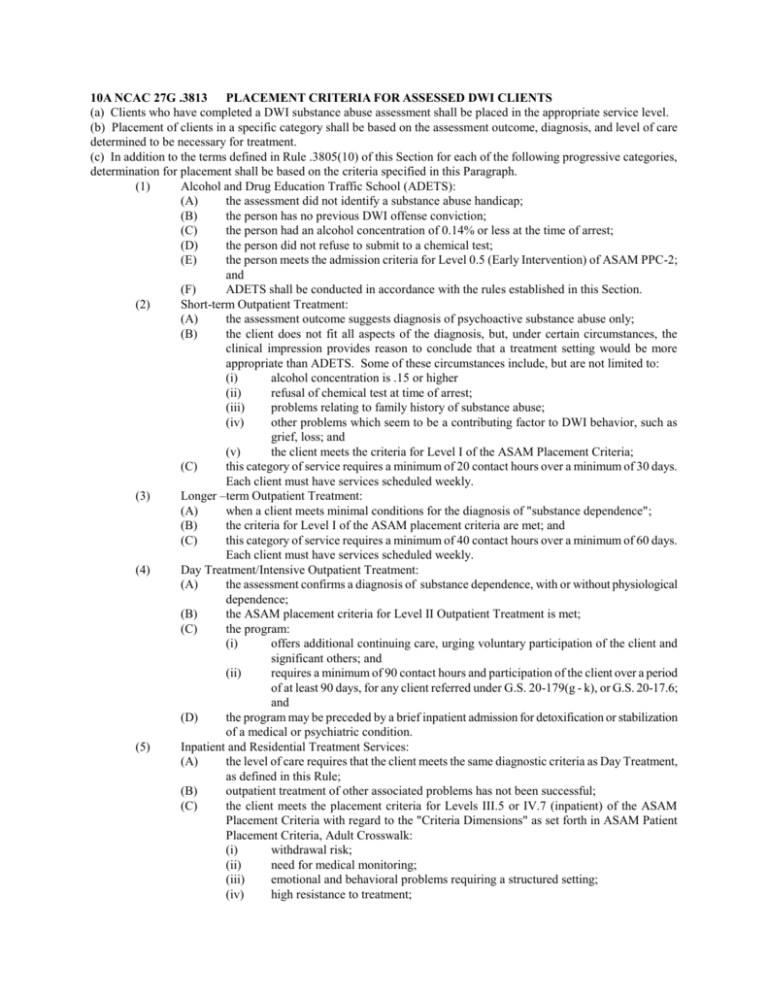
10A NCAC 27G .3813 PLACEMENT CRITERIA FOR ASSESSED DWI CLIENTS (a) Clients who have completed a DWI substance abuse assessment shall be placed in the appropriate service level. (b) Placement of clients in a specific category shall be based on the assessment outcome, diagnosis, and level of care determined to be necessary for treatment. (c) In addition to the terms defined in Rule .3805(10) of this Section for each of the following progressive categories, determination for placement shall be based on the criteria specified in this Paragraph. (1) Alcohol and Drug Education Traffic School (ADETS): (A) the assessment did not identify a substance abuse handicap; (B) the person has no previous DWI offense conviction; (C) the person had an alcohol concentration of 0.14% or less at the time of arrest; (D) the person did not refuse to submit to a chemical test; (E) the person meets the admission criteria for Level 0.5 (Early Intervention) of ASAM PPC-2; and (F) ADETS shall be conducted in accordance with the rules established in this Section. (2) Short-term Outpatient Treatment: (A) the assessment outcome suggests diagnosis of psychoactive substance abuse only; (B) the client does not fit all aspects of the diagnosis, but, under certain circumstances, the clinical impression provides reason to conclude that a treatment setting would be more appropriate than ADETS. Some of these circumstances include, but are not limited to: (i) alcohol concentration is .15 or higher (ii) refusal of chemical test at time of arrest; (iii) problems relating to family history of substance abuse; (iv) other problems which seem to be a contributing factor to DWI behavior, such as grief, loss; and (v) the client meets the criteria for Level I of the ASAM Placement Criteria; (C) this category of service requires a minimum of 20 contact hours over a minimum of 30 days. Each client must have services scheduled weekly. (3) Longer –term Outpatient Treatment: (A) when a client meets minimal conditions for the diagnosis of "substance dependence"; (B) the criteria for Level I of the ASAM placement criteria are met; and (C) this category of service requires a minimum of 40 contact hours over a minimum of 60 days. Each client must have services scheduled weekly. (4) Day Treatment/Intensive Outpatient Treatment: (A) the assessment confirms a diagnosis of substance dependence, with or without physiological dependence; (B) the ASAM placement criteria for Level II Outpatient Treatment is met; (C) the program: (i) offers additional continuing care, urging voluntary participation of the client and significant others; and (ii) requires a minimum of 90 contact hours and participation of the client over a period of at least 90 days, for any client referred under G.S. 20-179(g - k), or G.S. 20-17.6; and (D) the program may be preceded by a brief inpatient admission for detoxification or stabilization of a medical or psychiatric condition. (5) Inpatient and Residential Treatment Services: (A) the level of care requires that the client meets the same diagnostic criteria as Day Treatment, as defined in this Rule; (B) outpatient treatment of other associated problems has not been successful; (C) the client meets the placement criteria for Levels III.5 or IV.7 (inpatient) of the ASAM Placement Criteria with regard to the "Criteria Dimensions" as set forth in ASAM Patient Placement Criteria, Adult Crosswalk: (i) withdrawal risk; (ii) need for medical monitoring; (iii) emotional and behavioral problems requiring a structured setting; (iv) high resistance to treatment; (v) inability to abstain; and (vi) lives in a negative and destructive environment; (D) in order for the client to meet the required minimum 90-day time frame for treatment, the client, upon discharge, shall enroll in an approved continuing care or other outpatient program: (i) these services shall be provided according to a written continuing care plan which shall address the needs of the client; (ii) these services shall utilize individual, family and group counseling as required to meet the needs of the client; and (iii) the plan shall include client participation. (6) Special Service Plan: (A) Documentation of the need for a special program to correspond with the recommendations of the DWI assessment; (B) Conditions under which a Special Service Plan is implemented may include, but need not be limited to, the following: (i) severe hearing impairment; (ii) other physical disabilities; (iii) concurrent psychiatric illness and; or (iv) language differences and communication problems. History Note: Authority G.S. 20-17.6(c); 122C-142.1; 143B-147; Eff. April 1, 2001.
